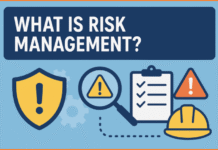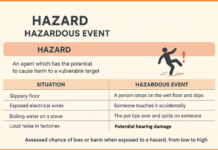Contents
Introduction to the National Safety Council and Its Mission
The National Safety Council (NSC) stands as a beacon of commitment towards the eradication of preventable injuries and fatalities, operating with an unwavering focus on safety in various environments, including roadways. Established as a nonprofit organization, the NSC has been at the forefront of promoting safety and well-being since its inception in 1913. The Council’s mission is clear and resolute: to save lives by preventing injuries and deaths at work, in homes, communities, and notably, on the roads through comprehensive leadership, meticulous research, specialized education, and robust advocacy.
Throughout its long and distinguished history, the National Safety Council has leveraged its expertise to spearhead numerous initiatives that have significantly enhanced public health and safety standards. One of the primary areas where the NSC has made substantial strides is road safety. Recognizing the critical nature of road safety, the council has deployed a multi-faceted approach involving rigorous research to understand the root causes of road accidents, developing educational programs to foster safe driving behaviors, and advocating for policies that enhance road safety infrastructure.
The NSC’s contributions extend beyond advocacy and education; it actively collaborates with policymakers, industry leaders, and communities to instill a culture of safety. The organization has been instrumental in the implementation of key safety measures, such as seatbelt usage, child passenger safety, and the prevention of impaired and distracted driving. These initiatives have undoubtedly saved countless lives and continue to shape safer road environments for all.
In sum, the National Safety Council’s unwavering dedication to road safety underscores its pivotal role in public health advocacy. By combining research-driven insights with actionable strategies, the NSC continues to pave the way for safer roads, contributing to the broader goal of minimizing preventable deaths and injuries across various spheres of life.
Statistical Overview of Road Safety
The National Safety Council (NSC) provides a comprehensive statistical analysis that sheds light on the current state of road safety. According to the latest data, traffic fatalities have seen alarming fluctuations over the past decade. In 2022, there were approximately 42,000 deaths on U.S. roadways, marking an increase from the previous year. Similarly, injuries resulting from traffic accidents numbered in the millions, emphasizing the persistent challenge of ensuring road safety.
A deeper examination of these statistics reveals various trends that contribute to road incidents. Key factors such as distracted driving, alcohol impairment, and speeding continue to be leading causes of traffic-related fatalities and injuries. For instance, distracted driving alone accounts for roughly 8.5% of total traffic deaths. Additionally, the NSC’s data highlight that young drivers, particularly those aged 16-24, are disproportionately affected, suggesting a need for targeted educational and preventative measures within this demographic.
The significance of statistical analysis in informing road safety measures cannot be overstated. By identifying trends and high-risk groups, stakeholders can develop more effective interventions and public policies. For example, the implementation of stricter laws against mobile phone use while driving has been shown to reduce accident rates in several states. Similarly, enhanced public awareness campaigns about the dangers of impaired driving have contributed to altering driver behavior and improving safety on the roads.
The NSC’s ongoing commitment to collecting and analyzing road safety data is crucial for the continual improvement of traffic systems and the formulation of safety protocols. By leveraging this wealth of information, policymakers, law enforcement, and public health officials can work collaboratively to create safer road environments for all users.
Key Strategies and Programs to Enhance Road Safety
The National Safety Council (NSC) has established a comprehensive array of strategies and initiatives designed to improve road safety and reduce the incidence of traffic-related accidents. Central to these efforts are the NSC’s defensive driving courses, which provide drivers with the skills and knowledge necessary to avoid potential hazards and operate vehicles more safely. By emphasizing proactive driving behaviors and the importance of situational awareness, these courses have proven effective in cultivating safer driving habits.
Public awareness campaigns constitute another critical facet of the NSC’s road safety initiatives. These campaigns seek to educate the public on various aspects of road safety, including the dangers of distracted driving, the importance of seatbelt use, and the risks associated with driving under the influence of alcohol or drugs. Through the dissemination of informative content via multiple media channels, the NSC aims to foster a culture of safety-consciousness among the general population.
Legislative advocacy represents another significant avenue through which the NSC seeks to enhance road safety. By lobbying for stricter traffic laws and regulations, the NSC endeavors to create a legal framework that promotes safer driving behaviors and enforces accountability. Key legislative priorities include the enforcement of mandatory seatbelt laws, the implementation of stringent penalties for impaired driving, and the regulation of mobile phone use while driving.
The NSC also actively promotes the adoption and development of cutting-edge safety technologies. Advanced driver assistance systems (ADAS), such as adaptive cruise control, lane-keeping assist, and automatic emergency braking, are highlighted for their potential to prevent accidents and mitigate the severity of collisions. Additionally, the NSC supports the advancement of vehicle-to-infrastructure (V2I) communication technologies, which enable real-time data exchange between vehicles and roadway infrastructure. This technology holds significant promise for enhancing traffic management and addressing complex safety challenges.
Through these targeted strategies and initiatives, the NSC underscores its dedication to preventing road accidents and enhancing overall traffic safety. By employing a multifaceted approach that encompasses education, advocacy, and technological innovation, the NSC continues to make significant strides in promoting safer roadways for everyone.
How Individuals and Communities Can Contribute to Road Safety
Promoting road safety requires a collective effort, where both individuals and communities play pivotal roles. Engaging in safe driving practices is a fundamental step everyone can take. This includes adhering to speed limits, avoiding distractions such as mobile phones, and never driving under the influence of alcohol or drugs. Seatbelt use for all vehicle occupants must be non-negotiable as it significantly reduces the risk of injury during accidents.
Vehicle maintenance is another critical aspect of road safety. Ensuring that your vehicle is in optimal condition can prevent breakdowns and mishaps on the road. Regularly check and maintain your brakes, tires, lights, and fluid levels to ensure the vehicle’s reliability and safety. Not only does this prevent accidents, but it also enhances overall vehicle performance.
Pedestrian safety is equally important, and individuals can contribute by being more vigilant. Always use designated crosswalks and be cautious at intersections. Wearing visible clothing in low-light conditions can help drivers see you better. As a driver, yielding to pedestrians at crosswalks and staying alert in areas with high foot traffic is essential to avoid accidents.
Community involvement can amplify these individual efforts. Participating in local road safety initiatives, such as forming neighborhood watch groups or joining community safety workshops, can foster a culture of safety. Local governments often organize campaigns and educational programs on safe driving and pedestrian practices, which are excellent opportunities to learn and contribute.
The National Safety Council (NSC) offers various programs and campaigns designed to enhance road safety. By engaging in these programs, such as defensive driving courses and public awareness campaigns, individuals and communities can significantly reduce road accidents and injuries. These initiatives provide valuable knowledge and practical tools that empower people to advocate for safer roads.
Ultimately, by adopting safe driving habits, maintaining vehicles, ensuring pedestrian safety, and actively participating in community initiatives, individuals can make a substantial impact. Road safety is a shared responsibility, and through collective action, we can create safer communities for everyone.





